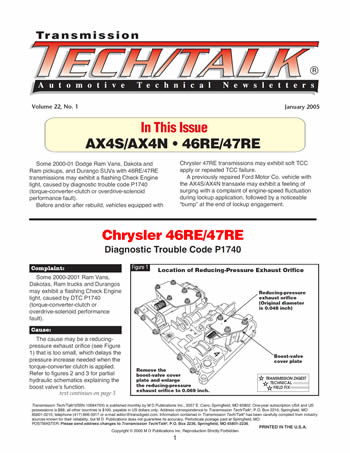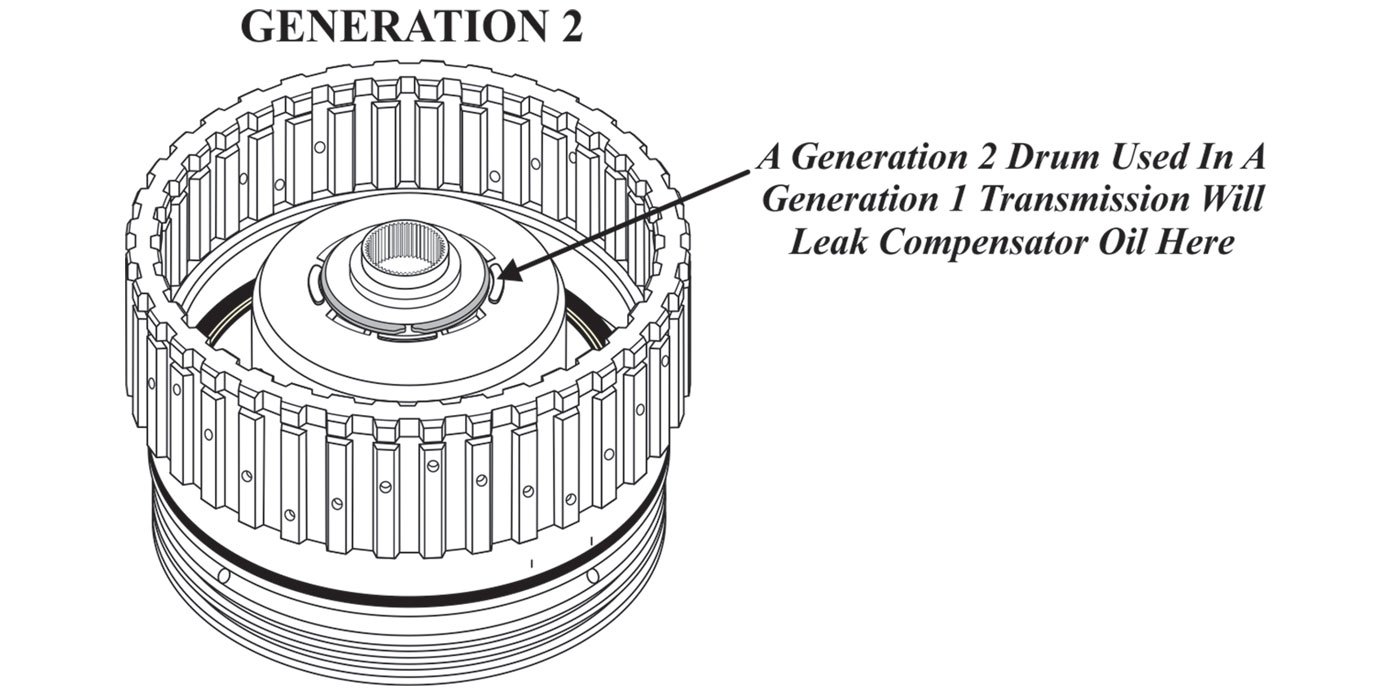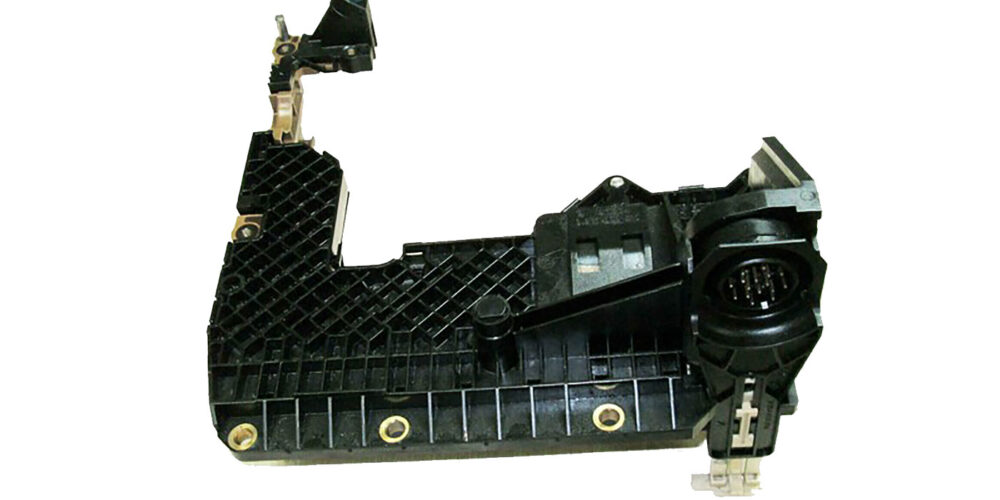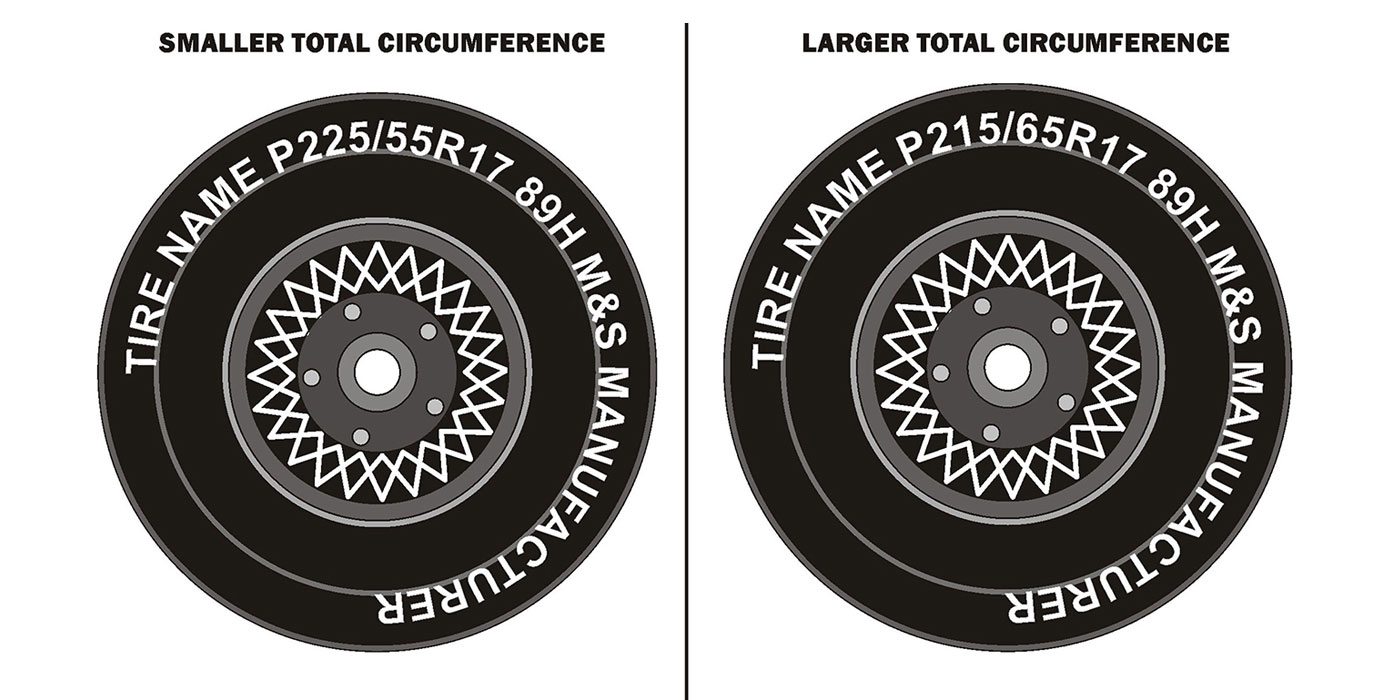

Issue Summary:
- Some 2000-01 Dodge Ram Vans, Dakota and Ram pickups, and Durango SUVs with 46RE/47RE transmissions may exhibit a flashing Check Engine light, caused by diagnostic trouble code P1740 (torque-converter-clutch or overdrive-solenoid performance fault).
- Before and/or after rebuild, vehicles equipped with Chrysler 47RE transmissions may exhibit soft TCC apply or repeated TCC failure.
- A previously repaired Ford Motor Co. vehicle with the AX4S/AX4N transaxle may exhibit a feeling of surging with a complaint of engine-speed fluctuation during lockup application, followed by a noticeable “bump” at the end of lockup engagement.


Some 2000-2001 Ram Vans, Dakotas, Ram trucks and Durangos may exhibit a flashing Check Engine light, caused by DTC P1740 (torque-converter-clutch or overdrive-solenoid performance fault).

The cause may be a reducing-pressure exhaust orifice (see Figure 1) that is too small, which delays the pressure increase needed when the torque-converter clutch is applied.
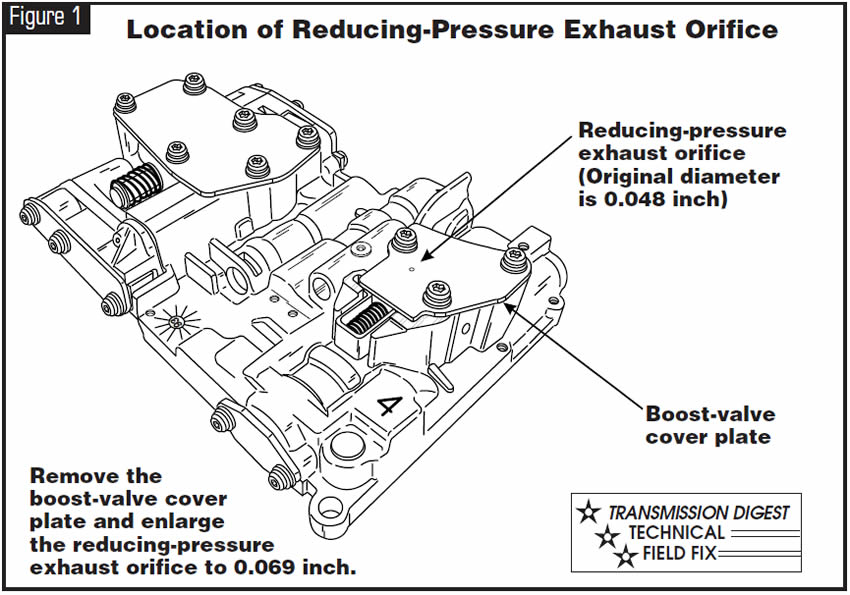
Refer to figures 2 and 3 for partial hydraulic schematics explaining the boost valve’s function.
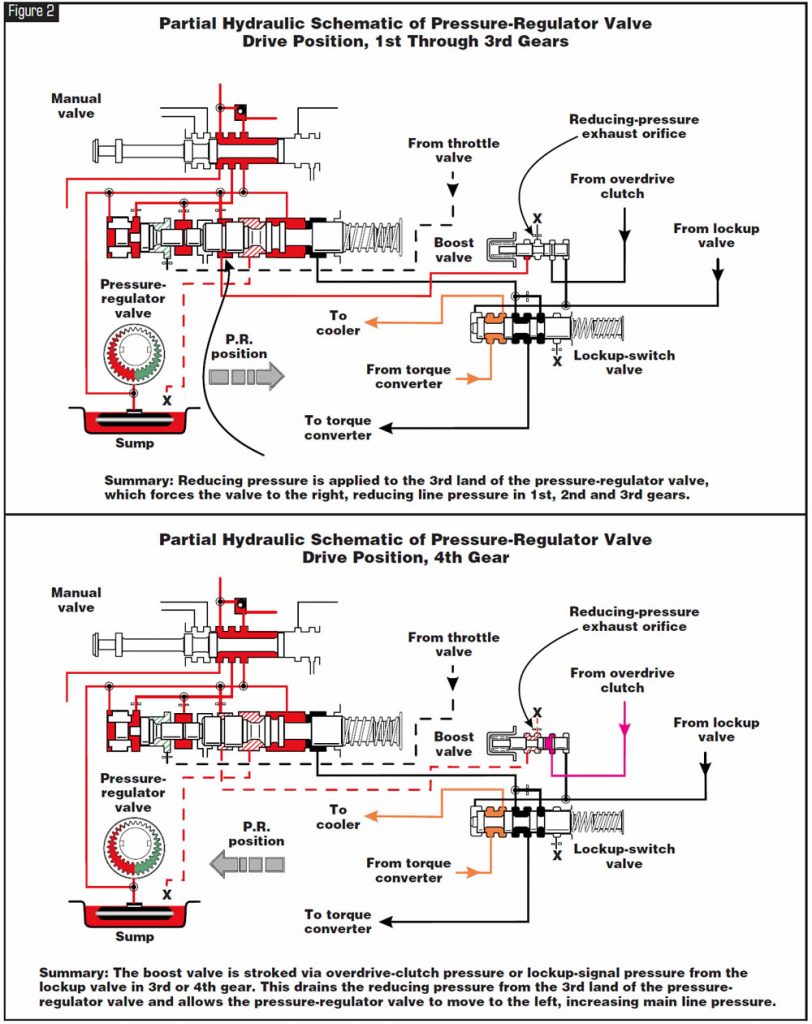
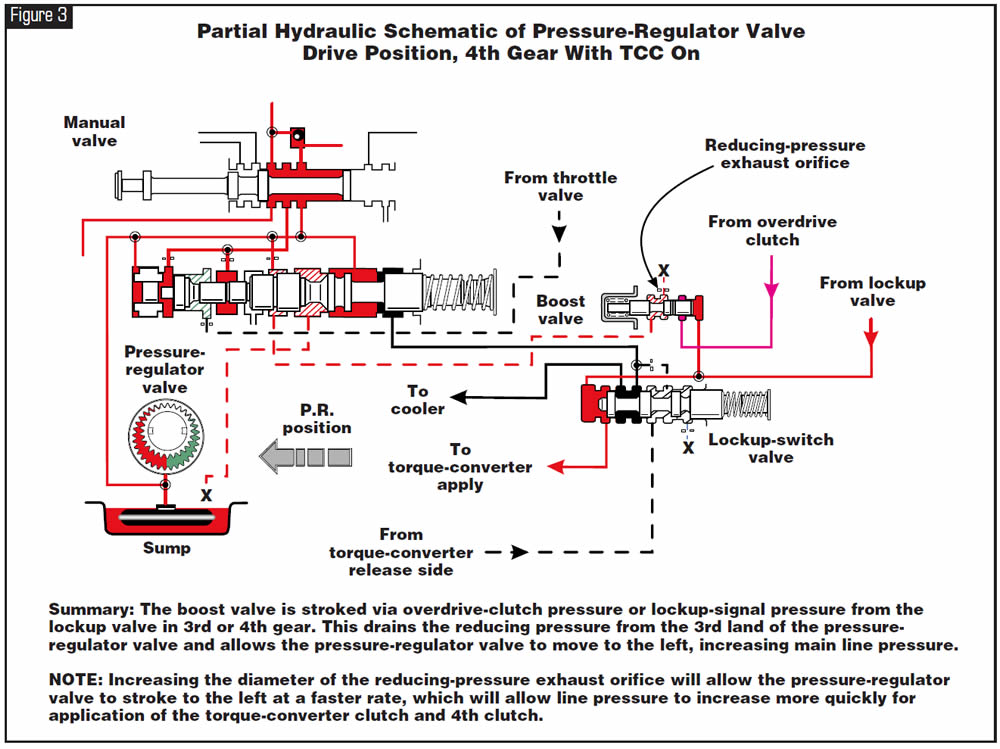

Refer to Figure 1 to locate the reducing-pressure exhaust orifice, which is in the boost-valve cover plate. Remove the plate and enlarge the orifice shown to 0.069 inch. Chrysler also provides a new boost-valve cover plate that already has the orifice enlarged.

- Boost-valve cover plate (Chrysler part No.) 04617012




Before and/or after rebuild, vehicles equipped with the 47RE transmission may exhibit a soft TCC apply or repeated TCC failure.

One cause may be TCC release oil not exhausting quickly enough from the front side of the torque converter (see Figure 4).
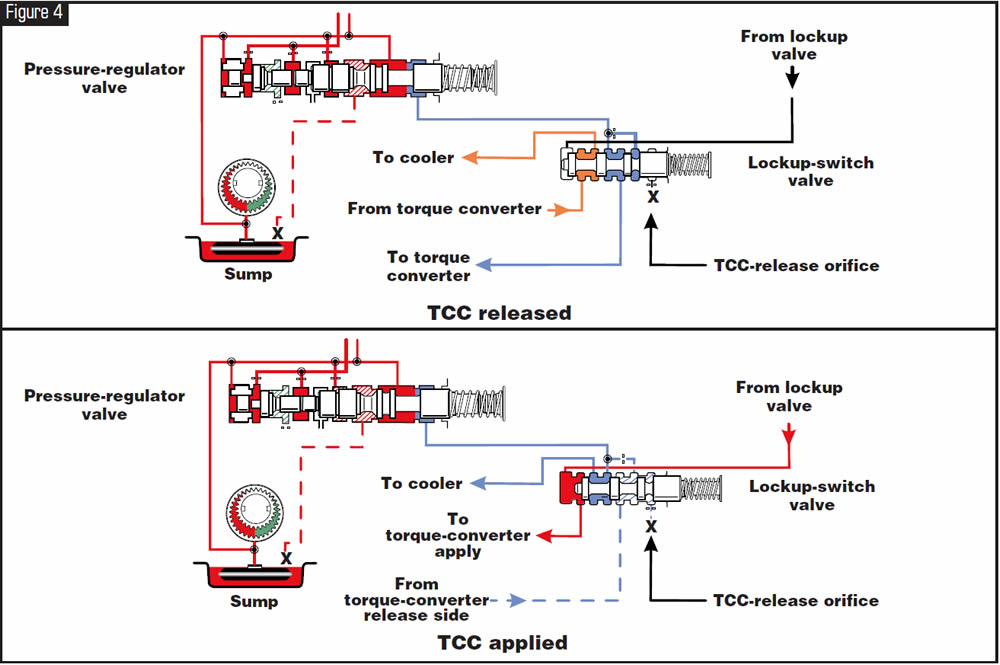

Change or modify the narrow-slot separator plate (see Figure 5) to the wide-slot separator plate (see Figure 6).
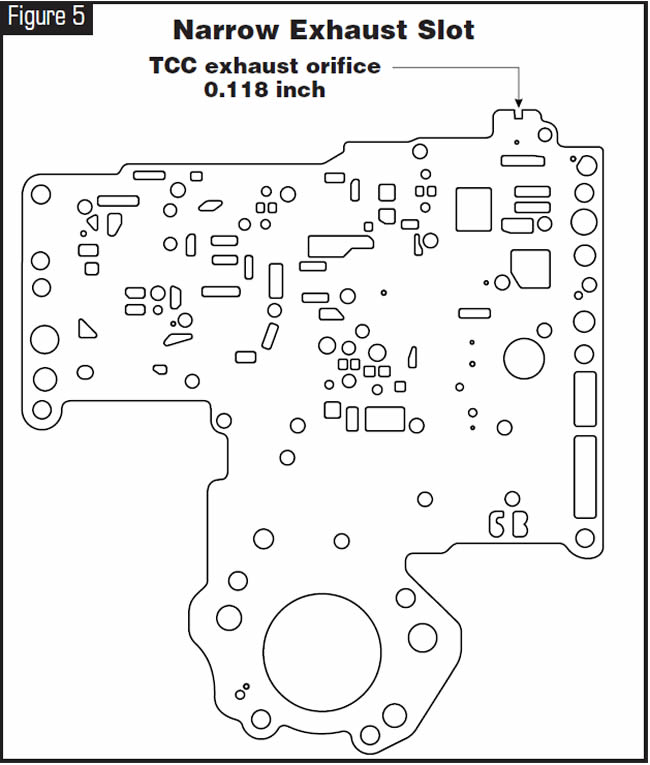
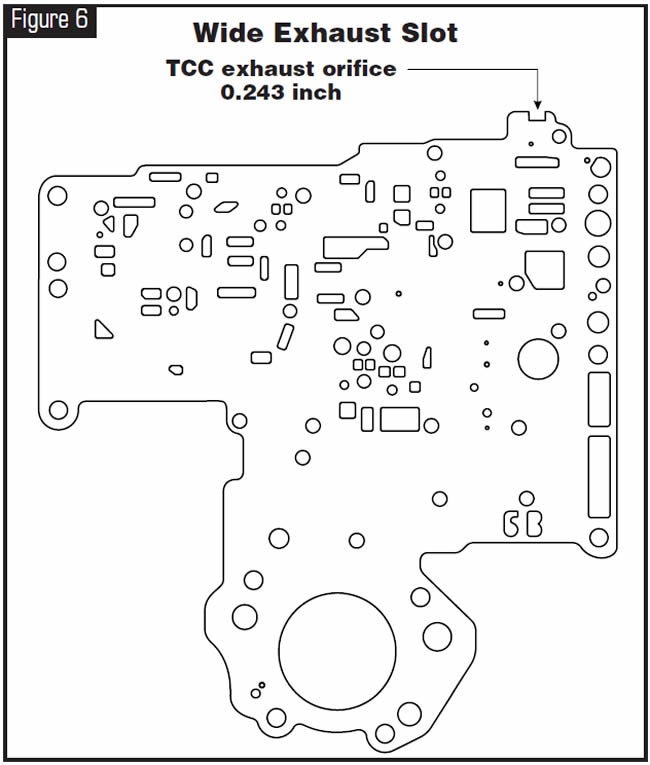




Complaint 1:
The previously repaired vehicle in question may exhibit a feeling of surging with a complaint of engine-speed fluctuation during lockup application, followed by a noticeable “bump” at the end of lockup engagement. Codes P0741 for “TCC Stuck Off,” P1728 for “Converter Slip” and/or P1744 for “TCC Performance” may be stored. In some instances P0743 for “TCC Solenoid Circuit Fault” also may be stored.
Complaint 2:
The previously repaired vehicle in question may experience lockup shudder as throttle is increased and the vehicle is placed under load.

Cause 1.
An incorrect lockup solenoid was installed in the transmission. The lockup solenoid with the white connector, which has a resistance value of 0.98 to 1.6 ohms, is not interchangeable in all applications with the lockup solenoid with the blue connector, which has a resistance value of 13 to 24 ohms (see Figure 7). Installing the lockup solenoid with the blue connector on vehicle/transmission combinations that were originally equipped with the lockup solenoid with the white connector could be responsible for these complaints with the exception of code P0743. Installing the lockup solenoid with the white connector on vehicle/transmission combinations that originally were equipped with the lockup solenoid with the blue connector could be responsible for the P0743 code because of the additional current that’s allowed to flow through the circuit.
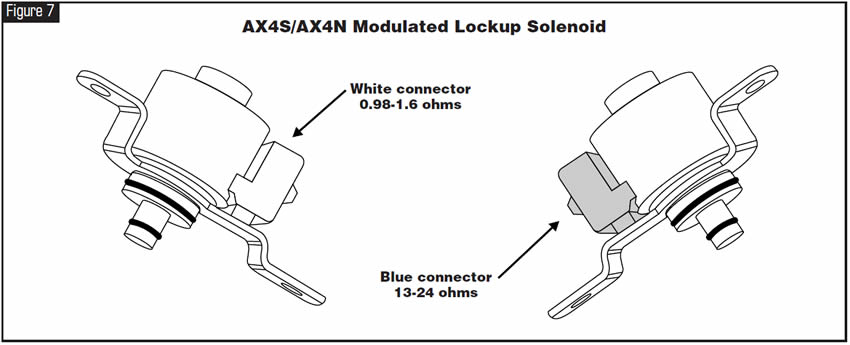
Theory of Operations: In addition to a change in the solenoid’s winding, there also are changes in PCM strategy for operating characteristics of the two solenoids. The low-resistance solenoid is duty-cycled with a two-stage PWM signal. The first stage of pulses begins at a frequency of 66 hertz (Hz). The second stage of pulses will increase to control the output pressure of the solenoid as needed to bring the converter-clutch slip to zero rpm (see Figure 8).
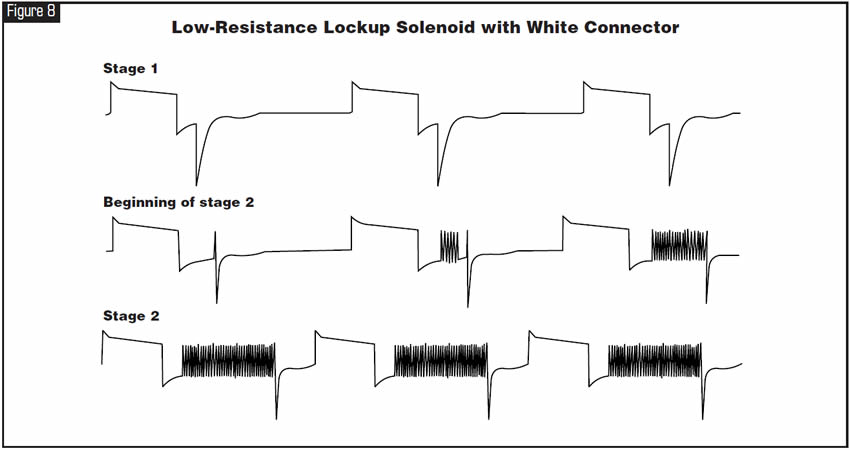
The high-resistance solenoid employs a different control strategy from that of the low-resistance-solenoid control system. This solenoid works off a fixed frequency of 50 Hz with a standard PWM signal (see Figure 9), thereby increasing the pulse width to bring converter-clutch slip to zero rpm. This type of solenoid is designed to run cooler and last longer.
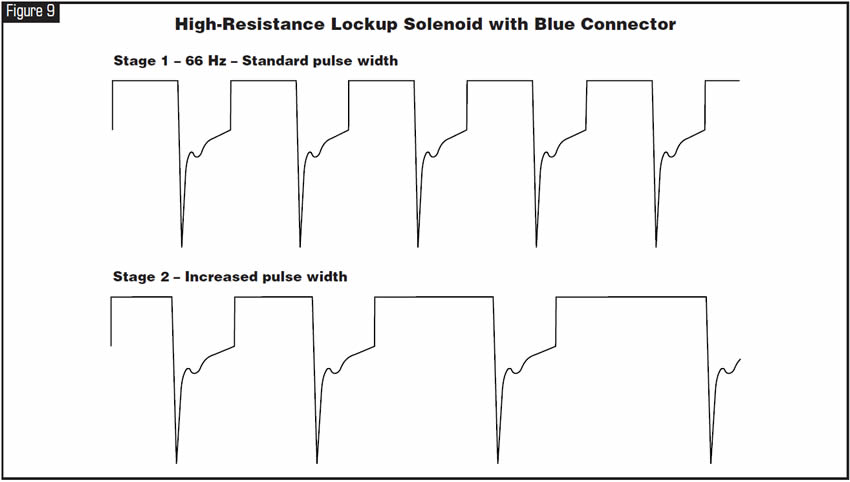
Cause 2.
An incorrect converter was installed in the vehicle. Two types of converters are used for these vehicle/transmission combinations. The differences in these converters involve the type of converter clutch they use. The use of a single-sided-clutch type of converter in a vehicle that requires a dual-clutch converter can cause the complaint mentioned. The converter clutch can be a single-sided clutch, with the clutch bonded to the front cover, and the damper/apply piston shown above it in Figure 10.
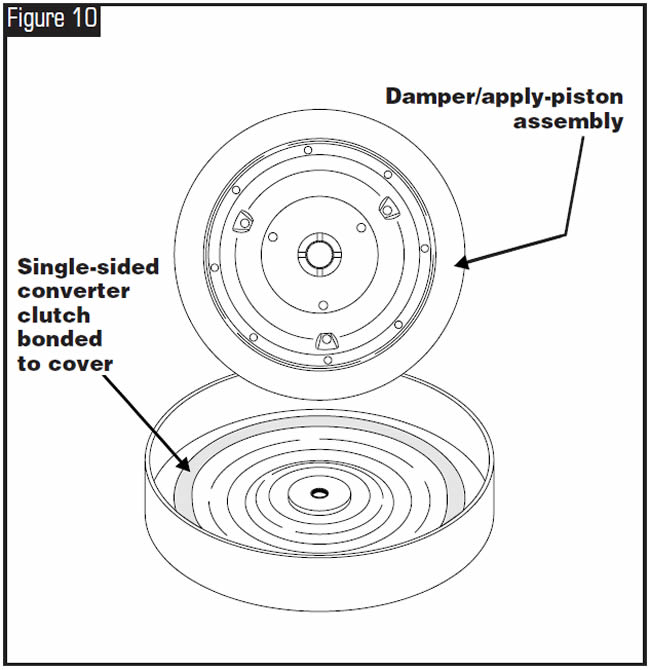
Or it can be a dual-modulated, two-sided converter clutch with a friction surface bonded to the front and rear sides of a disc suspended between the cover and the apply piston. The apply piston has four ball-and-spring dowel pins that align and snap into the cover to keep the suspended friction disc centered between the piston and the cover (refer to Figure 11) and connect to the damper assembly as shown in Figure 12.

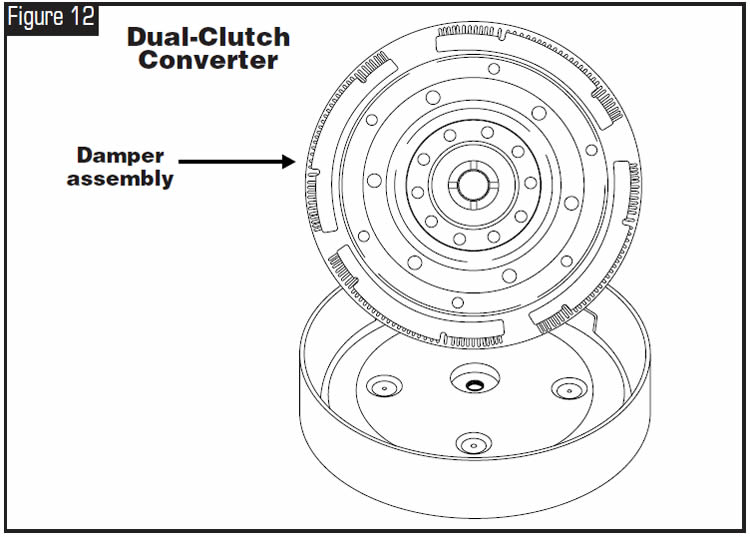

Correction 1:
Refer to the chart in Figure 13 for the correct solenoid application and usage.
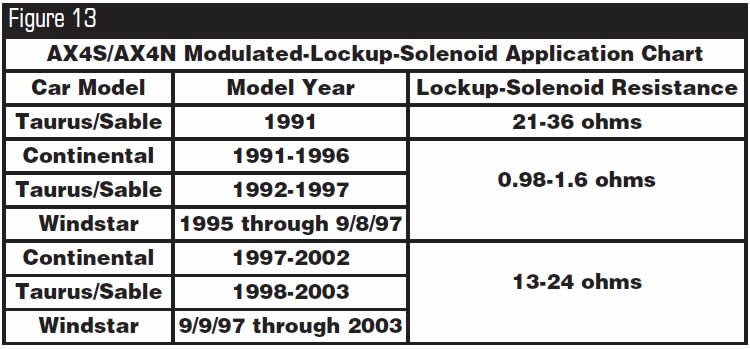
Caution: When determining which solenoid to use in a Windstar, refer to the production date on the vehicle certification label on the driver-side door jamb. The reason for this is that the Windstar could have either solenoid within the 1998 model year.
Correction 2:
The way to tell which converter you have, whether it is the original or the replacement converter, is to look down into the center of the converter just outside the turbine-spline area and see whether there are four tabs (see Figure 14) or two tabs. The one with two tabs is a single-clutch-type converter, and the one with four tabs is the dual-clutch type.
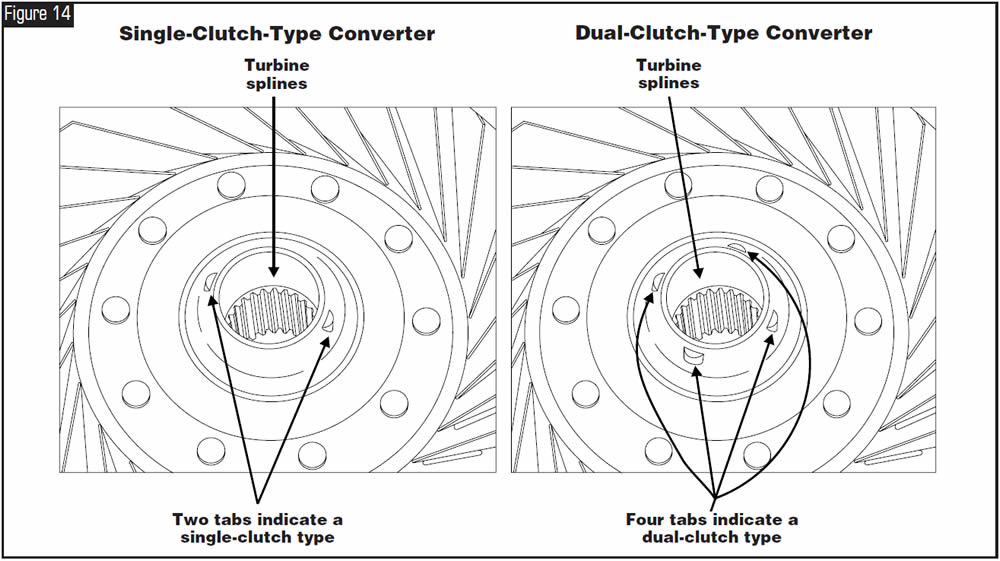

- Low-resistance lockup solenoid with white connector . . . . . . . . . . . . . . . . .F3DZ-7G136-A
- High-resistance lockup solenoid with blue connector . . . . . . . . . . . . . . .F7OZ-7G136-AA
The following vehicle/transaxle combinations use the dual-clutch type of converter clutch:
- 1999-2003 Windstar with 3.8-liter engine and AX4S,
- 1996-1997 Taurus/Sable with 3.0-liter DHOC engine and AX4N,
- 1995-2001 Lincoln Continental with 4.6-liter engine and AX4N.
Consult your converter supply company’s catalog for assistance in choosing the correct converter.


January 2005 Issue
Volume 22, No. 1
- Chrysler 46RE/47RE: Diagnostic Trouble Code P1740
- Chrysler 47RE: Soft TCC Apply
- Ford AX4S/AX4N: Correct Lockup-Solenoid & Torque-Converter Usage

